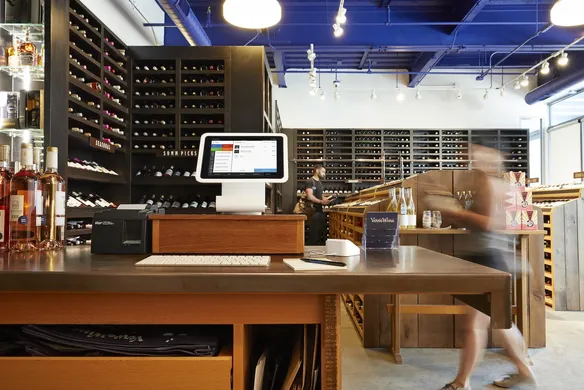Intro
You might have heard that brick-and-mortar retail is doomed and that consumers only want to shop online. Neither is true. Today’s customers, especially millennials, like to purchase online, but still frequent brick-and-mortar to get a true feel for the products. Today’s customers demand a seamless experience between online and in-store, which is why you need an omnichannel approach. Omnichannel retail, which has emerged as a successful sales strategy, engages consumers from multiple fronts and enables a harmonious shopping experience. In fact, Australia leads omnichannel penetration, especially in consumer electronics, so you definitely don’t want to be left behind.
Before you can enjoy the benefits of omnichannel retail, you first need to understand how to create an omnichannel marketing strategy. Here’s how to get started:
What is omnichannel retailing?
Omnichannel retail is an integrated approach to selling that enables customers to browse, shop, and purchase through a variety of channels, like a brick-and-mortar store, social media, website, and mobile.
You might have also heard of multichannel retailing. This can entail the same channels, but it lacks the integration of an omnichannel approach. A multichannel brand can have both a website and a brick-and-mortar store. But, when customers buy items on the website, they can only return through the website, not the store (and vice versa).
The difference between omnichannel and multichannel is that omnichannel is a holistic, integrated strategy while multichannel is siloed. It’s no surprise that omnichannel adoption is growing — it’s much more convenient to the customer versus multichannel.
Consumer behaviours are pushing the move to omnichannel
As the retail landscape has changed, so have consumer behaviours. Now, there are higher customer expectations for “a uniform, and integrated service or experience, regardless of the channel they use,” as cited in the journal Frontiers in Psychology. According to this research, consumers are always in at least one channel, and they want to use their mobile devices to search for and research items, compare prices, seek advice, and to generally gain more control over the purchase process.
In a study by the Harvard Business Review, researchers found that consumers made frequent use of a retailer’s various touchpoints. They like checking prices on an app, using in-store digital tools like tablets, and buying online and picking up in-store. The research also found that the more channels a shopper used, the more money they spent.
Deep Dive
Three ways omnichannel elevates your retail business
Expanding access.
Perhaps the most important way that omnichannel retail benefits your business is by offering consumers more opportunities to buy your products and services. If you are strictly a brick-and-mortar store, customers can only shop certain days and times of the week. They also have to be close enough to easily visit your business in person.
But if you offered an eCommerce option, customers could shop from anywhere, and at any time of day or night. They could also search online to check products and prices before making the trip to your store. This is something they might not have been as willing to do before knowing what you had in stock.
Reach potential new customers.
In-person events are a great way to introduce your business to a wider audience. They are also a great way to create a more personal connection with previous customers. Consider speaking on a panel, offering a class, or organising a meetup. Anything that gets you in front of people and making connections helps make an impression on potential customers and raises awareness of your business.
Seamless experience.
An important benefit of an omnichannel retail strategy is that it can remove some of the hassles of the in-store shopping experience. Searching the aisles for a product or waiting in long queues to pay can be a pain. Options like buying online and picking up in-store or buying online and returning in-store are customer-friendly practices that integrate the online and offline experience.
Three challenges that come from omnichannel retailing
Technology integration.
A truly integrated omnichannel experience should feel seamless and effortless to customers. But there is a lot of work that goes into making it seem so simple. Syncing your inventory, providing excellent customer service, and offering competitive shipping options are all challenging aspects of the omnichannel commerce strategy. However, Square’s retail POS system makes tracking inventory and sales across all your locations a snap, and with Square Virtual Terminal you and your team can take payments and track orders from anywhere. All you need is a computer and an internet connection.
Cultural barriers.
If you operate a traditional brick-and-mortar store, you might face resistance from employees when transitioning from in-store to omnichannel selling. For example, if staffers work on commission, they might see the eCommerce side of the business as competition. That might lead them to pressure customers to buy a product that’s available in-store, instead of suggesting more suitable options that are available online. Make sure omnichannel retail benefits both employees and customers with things like employee incentives.
Personalisation.
It might sound counterintuitive, but the more channels a customer has, the easier it can be for them to slip through the cracks. Square Point of Sale software allows you to create customer profiles and loyalty programs, creating a personalised, curated shopping experience. This is a good way to win customer loyalty.
Three examples of omnichannel retail
Major retailers are leading the charge when it comes to omnichannel shopping and considering customer’s needs. They’ve worked to improve the purchasing experience by seamlessly integrating multiple channels. Here are a few examples:
McDonald’s
McDonald’s is known for its massive brick-and-mortar presence. But despite the number of locations, customers can still face long queues and crowds. The company addressed that issue by introducing a feature on their app that allows customers to order through their mobile device and then pick up at the counter in their local store. This allows them to skip the queue and save time.
David Jones
Department stores are often considered the dinosaurs of the retail world. But David Jones has managed to stay relevant by adopting an omnichannel retailing approach, like adding shoppable content to their Instagram posts. On posts with a tiny shopping bag icon in the top right corner, consumers can tap on the image to see which products are for sale. When they tap the desired product, it directs them to the David Jones website, where they can order online or click and collect at a local store.
Bing Lee
The electronics retailer started off as a purely brick-and-mortar enterprise, but it has managed to set itself apart from its competitors by offering a robust omnichannel experience. Bing Lee offers a search filter that allows customers to search for items that are available for same-day, 2-hour, and scheduled click-and-collect. This allows customers to set the time that works best for them and helps the store’s employees to better prioritise orders.
Creating an omnichannel retail strategy
Every business’s omnichannel user experience is a bit different, so take the time to think about your goals, resources, and culture when creating one of your own.
Consider each channel.
From brick-and-mortar to desktop to mobile to social, think about the functionality that you are equipped to offer. Do you want to offer shoppable Instagram posts, like David Jones? Click and collect like Bing Lee? Think about what you are equipped to offer and perhaps roll out new experiences gradually so that you are prepared to provide customers with a seamless experience. If you roll out too quickly and disappoint customers with subpar service, it can be difficult to win back their trust.
Align inventory and experience.
How do your eCommerce channels look? Do they match the design and tone of your brick-and-mortar store? You want to make sure that your omnichannel user experience closely mirrors the in-store experience. One of the trickiest parts of omnichannel retail is syncing up inventory across channels so that employees and customers have an accurate sense of what is available and how they can get it.
Get employees on board.
When you’re rolling out an omnichannel strategy, it’s key that you include your staff. Educate them about how to use various channels to provide the best customer experience possible. If employees work on commission, consider incentivising them when they help customers find something online that isn’t available in-store. This can help them embrace eCommerce and not see it as the enemy.
Make personalization a priority.
Don’t let customers get lost in your omnichannel retail offerings. Use analytics and customer data, like previous purchases, to create a unique experience. Suggest products they might like, alert them to sales at their local store, and offer them a discount when they haven’t shopped for a while. After all, customers are the heart of your business, so make sure your omnichannel marketing strategy only makes their experience better.
![]()













